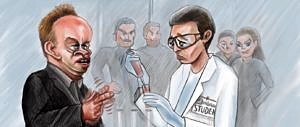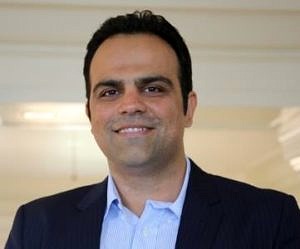Institute Seminar
Internal Seminars
2021
| Date | Presented by | Title |
| 13.04.2021 | Laura Unger | Functionalization of thermoplastic microparticles via a gas phase process |
| 20.04.2021 | Florentin Riedel | Wet grinding of polymers in stirred media mills for the production of polymer powders for laser beam melting |
| 04.05.2021 | Elisabeth Reinhardt | Micro- and nanoscale layer formation of hybrid perovskite CH3NH3PbI3 |
| 11.05.2021 | Julia Seifert | Continuous flow synthesis of gold-on-polystyrene patchy particles |
| 18.05.2021 | Yaraset Galvan | Confining Ionic Liquids to Surfaces |
| 25.05.2021 | Saman Hosseinpour | General Laser Safety Instruction |
| 22.06.2021 | Giulia Magnabosco | Inverse opals for catalysis |
| 29.06.2021 | Herbert Canziani | #supraparticle #3dprinting |
| 06.07.2021 | Andreas Völkl | Process Chain for Tunable Patchy Particles |
| 20.07.2021 | Fabian Schilfarth | Polyhydroxilated Fullerenes: a model system for the separation of hydrophilic carbon dot species |
| 27.07.2021 | Lukas Gromotka | Chromatographic classification of gold clusters and plasmonic nanoparticles |
| 03.08.2021 | Vanessa Götz | Double emulsion stability: from molecular to macroscopic scale |
| 10.8.2021 | Vanessa Lautenbach | Biomolecules at interfaces and in the bulk |
| 24.08.2021 | Salvatore Chiera | Fabrication of liquid-infused surfaces via mussel-inspired chemistry |
| 07.09.2021 | Paola Cardenas | Multidimensional characterization of noble metal alloys |
| 21.09.2021 | Björn Düsenberg | Temperature influence on dry coating with respect to the triboelectricity |
| 28.09.2021 | Scott Maar | Top down synthesis of pharmaceutical particles |
| 12.10.2021 | Markus Biegel | Formation dynamics of coloured particles |
| 19.10.2021 | Jan Schwenger | Current status of Micro-/Nanomechanics in Vacuum at LFG |
| 26.10.2021 | Johannes Harrer | Iniferter-Based Self-Assembling Particles |
| 09.11.2021 | Julius Marhenke | Particle Separation with Polydimethylsiloxane-based Microfluidics. |
| 16.11.2021 | Sophie Mayer | Rational support design for enhanced catalytic activity of SILP systems |
| 14.12.2021 | Vainhav Gupta | Classical optics meets template assisted self assembly |
2022
| Date | Presented by | Title |
| 11.01.2022 | Amna Abdeljaoued | Electrostatic separation of nano plastics from wastewater |
| 18.01.2022 | Michael Auer | Chemistry lab safety instruction (German) |
| 01.02.2022 | Michael Auer | Chemistry lab safety instruction (English) |
| 08.02.2022 | David Panduro Vela | Creation of functional particles |
| 15.03.2022 | Lisa Stiegler | Shell-by-shell functionalization of metal oxide nanoparticles via solvophobic interactions |
| 22.03.2022 | Laura Unger | Novel particle dispersion concept for a concurrent fluid solids flow downer reactor |
| 12.04.2022 | Gudrun Bleyer | Self-assembly of structural colour pigments |
| 03.05.2022 | Lukas Römling | Photonic structures via self-assembly techniques |
| 17.05.2022 | Georgy Onishchukov | General laser safety instruction |
| 24.05.2022 | Julia Seifert | Continuous flow synthesis of gold-on-polystyrene patchy particles |
| 31.05.2022 | Teresa Walter | Development of repellent surface coatings |
| June – December 2022 | ||
| 07.06.2022 | Umair Sultan | Synthesis of hierarchical porous materials for nanoparticle chromatography |
| 05.07.2022 | Johannes Harrer | Acoustic crystallization of two-dimensional colloidal crystals (ACDC) |
| 19.07.2022 | Andreas Völkl | New Device: EOS Classizer ONE and Ag-SiO2 patchy particles kinetic measurements |
| 26.07.2022 | Fabian Schilfarth | Solvent effects in Carbon Dots synthesis |
| 02.08.2022 | Vanessa Lautenbach | Protein research at LFG |
| 09.08.2022 | Sophie Mayer | Rational support design for SILP catalysis |
| 04.10.2022 | Scott Maars | Wet nanomilling of drug materials using a novel stabilization mechanism via Zirconium complexation |
| 11.10.2022 | Lukas Gromotka | Chromatographic classification and characterization of plasmonic nanoparticles and gold clusters |
| 18.10.2022 | Nicolas Hesse | |
| 25.10.2022 | Nabi Traore | |
| 08.11.2022 | Markus Biegel | |
| 15.11.2022 | Moritz Moß | |
| 22.11.2022 | Shivam Baluni | |
| 29.11.2022 | Paola Cardenas | |
| 06.12.2022 | Abhinandan Kumar Singh | |
| 13.12.2022 | Florentin Tischer | |
2023
| Date | Presented by | Title |
| 11.04.2023 | Matthias Kawalek | Bipolar coagulation in bipolar electrosprays |
| 25.04.2023 | Laura Unger | A gas phase process to functionalize thermoplastic microparticles |
| 09.05.2023 | Fabian Zillner | Solvent effects in Carbon Dots synthesis |
| 23.05.2023 | Johannes Menath | How to self-assemble colloidal silica |
| 30.05.2023 | Gudrun Bleyer | Strategies for increased colour saturation in colloidal photonic crystals |
| 06.06.2023 | Julia Seifert | Investigation of the temporal variation of the optical properties of metallodielectric patchy particles |
| 13.06.2023 | Nabi Traorè | Size control of silver-gold alloy nanoparticles |
| 18.07.2023 | Moritz Moß | Multi-dimensional characterization with single particle light scattering |
| 05.09.2023 | Alexandra Helmer | Thin film preparation of out-of-plane oriented mica particles via electrophoretic deposition |
| 19.09.2023 | Paola Cardenas Lopez | Multidimensional characterization of complex nanoparticles by density gradient equilibrium AUC experiments |
| 26.09.2023 | Carina Bittner | Characterization of peacock mutants |
| 10.10.2023 | Markus Biegel | tba |
| 17.10.2023 | Björn Düsenberg | – |
| 24.10.2023 | Lukas Hartmann | Size and shape classification of spherical and anisotropic nanoparticles by size-exclusion chromatography |
| 07.11.2023 | Umair Sultan | no seminar |
| 14.11.2023 | Maret Ickler | Defined Self-Assembly of core-shell particles at air/water interfaces |
| 21.11.2023 | Frederic Rudlof | PLA-CB supraparticle systems |
| 28.11.2023 | Sophie Mayer | |
| 05.12.2023 | Leah Ebner | Formulation of dispersed systems via (melt) emulsification: Process design, in situ diagnostics and regulation |
| 12.12.2023 | Natalie Bonakdar | Inverse opals as sensors for aqueous analytes |
2024
| Date | Presented by | Title of the presentation |
| 06.02.2024 | Danny Long | Population Balance Modelling of Spherical Particles |
| 20.02.2024 | Nabi Traoré | Targeted property design of silver-gold alloy nanoparticles |
| 05.03.2024 | Umair Sultan | |
| 12.03.2024 | Gudrun Bleyer | |
| 26.03.2024 | Tarek Alkhuja | Phishing: Wie erkennt man gefälschte E-Mails |
| 23.04.2024 | Naveen Kumar | |
| 07.05.2024 | Leah Ebner | |
| 14.05.2024 | Johannes Harrer | |
| 04.06.2024 | Julia Seifert | |
| 11.06.2024 | Matthias Kawalek | |
| 25.06.2024 | Lukas Hartmann | Characterization of spherical and rod-shaped nanoparticles by SEC |
| 09.07.2024 | Carina Bittner | The Genetic, Cellular, and Photonic Mechanisms of Avian Structural Colouration |
| 30.07.2024 | Lukas Römling | |
| 20.08.2024 | Paola Cardenas | |
| 03.09.2024 | Maret Ickler | |
| 10.09.2024 | Daniel Platzer | |
| 17.09.2024 | Moritz Moß | |
| 08.10.2024 | Jonathan Martín González | |
| 22.10.2024 | Sophie Meyer | |
| 29.10.2024 | Frederic Rudlof | |
| 05.11.2024 | Raul Favaro Nascimento | |
| 12.11.2024 | David Panduro Vela | |
| 19.11.2024 | Natalie Bonakdar | |
| 10.12.2024 | Jialin Men |
External Seminars
Access to external digital seminars:
- LFG members are automatically members of the Institute Seminar StudOn Page and can find the digital seminar access links and other materials (slides, videos) there.
- Non-LFG members interested in attending a digital seminar should contact Dr. Lisa Stiegler.
2021
02.03.2021 (15:00 CET) Filling the space: Integrative responding to academic incivility in higher education. Prof. Morteza Mahmoudi
Abstract: Academic incivility represents a serious issue that affects all disciplines and people of all levels of experience. Creating a truly safe, productive and vibrant environment in academia requires coordinated and collaborative input and action of a variety of stakeholders including scholarly communities, funding agencies, and institutions. In this presentation, I will focus on a framework of integrated responding in which stakeholders as responsible and response-able parties could proactively collaborate and coordinate to reduce the incidence and consequences of academic incivility while building constructive academic cultures.
Biography:
Dr. Morteza Mahmoudi is an Assistant Professor of Radiology and Precision Health Program at Michigan State University (MSU). Before coming to MSU, he was an Assistant Professor at Harvard University. His specific research interest is in nanomedicine and regenerative medicine for the development of new nano-based platforms for the prevention/treatment of life-threatening conditions such as cardiomyopathy, cancer, and neurodegenerative diseases. With more than 260 publications, 20K citations, and an H-index of 70, he was among highly cited researchers (2018 and 2020) by Clarivate Analytics. Aside from nanomedicine and regenerative medicine, Dr. Mahmoudi is also very active in social sciences and specifically in drawing the attention of the scientific community in the rising issue of academic bullying.
Suggested readings:
https://paritymovement.org/about/
http://www.nature.com/articles/s41562-020-00937-1
http://onlinelibrary.wiley.com/doi/full/10.1002/anie.202009270
20.04.2021 (15:00 CEST) An Introduction to Microbiologically Influenced Corrosion (MIC) and anti-microbial coating technology as an environmentally friendly solution. Dr. Reza Javaherdashti and Dr. Arezoo Assarian
Abstract: Based on the estimated cost of corrosion to Germany, the minimum cost of microbial corrosion (MIC) to the German industry will be 0.2 billion dollars a year. The recoverable share from this cost could be up to 37% if appropriate corrosion management measures, particularly coating, are applied. In this presentation, after a quick review of the principles of MIC, the fundamental technology behind anti-microbial coating will be explained.
Biography:
Dr. Reza Javaherdashti holds a double degree in Materials Science and Metallurgical Engineering. Over his 25+ years in both academia and industry, He has been involved in 400+ projects in various industries globally. He has prepared many Root Cause analysis reports as well as having written eight books published by Elsevier, CRC Press, Springer and Wiley.
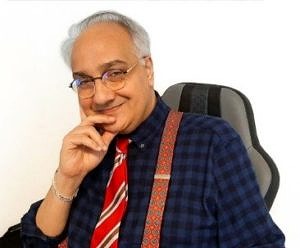
Dr. Arezoo Assarian holds a PhD in Chemical Engineering. She is a researcher, innovator and expert in manufacturing industrial and construction coatings with over 30 years of international experience. She is a certified inspector of coating (Level 2 NACE-USA) and welding (CSWIP3.0 , TWI-UK).
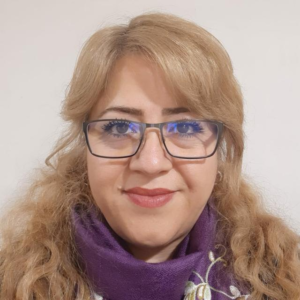
26.04.2021 (18:00 CEST) SPIE FAU - Bright Minds´ Vision: Succeeding in Academia and Industry. Prof. Dr. Lisa Poulikakos (UCSD), Lokesh Devaraj (Horiba Mira Ltd.), Eric S.A. Goerlitzer (LFG, SPIE)
Abstract:
Greetings from SPIE, the international society for optics and photonics, Student Chapter of FAU Erlangen-Nuremberg. We are hosting an online career orientation event, “Bright Minds´ Vision: Succeeding in Academia and Industry”, on 26th April 2021 at 18:00 CEST (Central European Summer Time). Everyone pursuing or interested in a career in the field of optics and photonics is more than welcome. We will focus on guiding and motivating students, doctoral candidates as well as young professionals and researchers to mould themselves better for their careers ahead in photonics and optical engineering.
We are delighted to announce two great speakers from academia and industrial research: Prof Dr Lisa Poulikakos from the University of California, San Diego is researching in the field of Nanophotonics for Global Health. Our second panellist is Lokesh Devaraj, who is pursuing his doctoral studies as Automotive Research Engineer at the Horiba Mira Ltd. in the United Kingdom, and will share his insights from an industrial perspective. The third panellist from a corporate and industrial R&D will be announced in the coming days.
We, the SPIE team, strongly believe that all students, early researchers and young professionals in the field of optics and photonics, will gain valuable insights and motivation from this interactive talk session and therefore are cordially invited to attend the event on 26th April 2021, at 18:00 CEST.
The event is online and completely open to all, you can find the zoom link to the event below. If you would like to keep updates and a newsletter, please send us an email to spie.fau@gmail.com, or follow us on Twitter (@SPIE_FAU) and Instagram (@spie_fau_erlangen).
Best Regards,
Officers,
SPIE Student Chapter,
FAU Erlangen-Nuremberg.
Biography of Prof. Dr. Lisa Poulikakos:
Lisa Poulikakos is an Assistant Professor in Mechanical and Aerospace Engineering at UC San Diego. She received her PhD in Mechanical and Process Engineering at ETH Zürich, where she studied with Professor David Norris. Her thesis, titled “Chiral Light–Matter Interactions in the Near and Far Field” introduced an original theoretical and experimental technique to enable the rational design of chiral nanophotonic systems. Her postdoctoral research in Materials Science and Engineering at Stanford University in the group of Professor Jennifer Dionne, focused on developing functional nanophotonic surfaces for all-optical, on-chip and label-free cancer tissue diagnostics. She is a recipient of the ETH Medal, awarded to outstanding doctoral theses, the L’Oréal USA For Women in Science Postdoctoral Fellowship and the Swiss National Science Foundation Early Postdoc Mobility Fellowship. Among the leadership positions she has held, she served as Chair of the 2018 Gordon Research Seminar in Plasmonics and Nanophotonics and was the founder and first president of the student-outreach organization “LIMES” at ETH Zürich.
Biography of Lokesh Devaraj:
Lokesh Devaraj is an Early Stage Researcher, designated as an automotive electronics research engineer at Horiba Mira Ltd, UK. As a part of the ETN – PETER ESR3, he will carry out research on the topic “Risk – Based Automotive Electromagnetic Engineering Approach aligned with the ISO26262 Functional Safety Approach”. His final goal is to develop a risk – based unified approach, which will include areas of human safety, functional safety and cyber security within the automotive EMC engineering practice, to provide robustness and resilience to future vehicles. This approach will rely heavily on the integration of computational electromagnetics results into the risk analysis. He obtained his Master’s degree in Advanced Optical Technologies at Friedrich–Alexander University Erlangen–Nürnberg. Besides academics, he was also involved in performing optical computations and laboratory experiments at various research institutes namely Fraunhofer IISB, ASML and AOTTP. In 2017, Lokesh completed his Bachelor’s degree in the major Electronics and Communication Engineering at RMKCET, Tamil Nadu, India.
27.04.2021 (15:00 CEST) Spreading light to see, seeing butterfly scales grow, and scaling colors to stretch. Prof. Mathias Kolle
Abstract: Nature is beautiful in its colors, and color perception plays a central role in our life. The obvious tool to shape the light spectrum is spectrally-selective light-absorbing pigmentation (to my great dismay, when confronted with the often color-poor choices of fashion designers); but just having the right pigment handy isn’t all that easy; for instance, the vast majority of organisms have no means of being blue … unless they know of the virtue of nano- and micro-scale material structures for manipulating light. In fact, for color strength, dynamics, and function, material structure control is everything! In this color-laced presentation, I will start by briefly discussing one example of our recent research, where structure-based light-manipulation principles gleaned from nature have helped us to devise a new technique for microscopic imaging of low-contrast hard-to-image specimens, such as bacteria and cells. Having established that bio-inspired optical design is useful, I will then argue that the interdisciplinary community of biological photonics and bio-inspired optics faces two key challenges, captured in two simple questions: How does nature grow functional materials with feature control across all relevant length scales? How can engineers make copious amounts of optically dynamic, useful materials with the required structural complexity? My students and I answer these questions to provide a perspective on how to better master the phenomena and bio-mechanical processes involved in biological structure formation and how to design dynamic optical materials at scale with unprecedented functionality.
Biography: Mathias’ research focuses on the identification of unique biological light manipulation concepts and the development of bio-inspired, dynamic photonic materials and devices. He joined the faculty of MIT in November 2013. Prior to that, Mathias held a Feodor Lynen research fellowship of the Alexander von Humboldt-Foundation for postdoctoral studies at the School of Engineering and Applied Sciences of Harvard University, where his research was focused on bio-inspired photonics, bio-imaging and optical spectroscopy. He earned his undergraduate degree in physics from the Saarland University in Germany and the University of Lorraine in France in 2006, followed by a PhD from the University of Cambridge in 2010.

01.06.2021 (9:15 CEST) Publishing advanced materials science with Wiley under the Projekt DEAL “Publish & Read” agreement – How to maximize your success!. Dr. Jos Lenders

Abstract:
Materials science is a multidisciplinary field of research with many different scientists and engineers having various backgrounds active in it. The literature landscape consequently is populated currently by a wide range of journals which greatly differ in purpose, scope, quality, and readership.
Jos Lenders (Editor-in-Chief of Advanced Materials) will track some of the most important developments and trends in the research field and the Advanced journals program. Advanced Materials reached an Impact Factor of 27.398 and received over 8,500 submissions last year – and Advanced Functional Materials over 11,000. Only around 15% of all those papers made it to publication in these journals, and this rate is similar for all other Advanced journals. So, what do editors do to select the very best papers, and what can authors do to optimize their chances of having their manuscripts accepted?
Jos hopes to provide some insights into these topics. Key aspects are: structuring one’s research work well and assembling a convincing manuscript, understanding the decision processes in editorial offices, choosing an appropriate journal and knowing what to put in the cover letter, and which things to avoid. The talk will also cover the reasoning behind editorial workflows and the peer-review process, publishing ethics and best practices for authors and reviewers, and possibilities for open access. In addition, the talk will include an update on Projekt DEAL, the “Publish & Read” agreement between Wiley and a consortium of over 700 German universities and research institutes, allowing scientists from those organizations to have access to and publish Open Access in all of Wiley’s journals. Anybody who is enthused about where the field of materials science and its top-level publications will go next is more than welcome to join the seminar and discussion.
Biography:
Dr. Jos Lenders is the Editor-in-Chief of Advanced Materials as well as a Deputy Editor for Advanced Optical Materials. He studied chemical engineering with a minor in biomedical engineering and a master in polymers and composites at Eindhoven University of Technology (in the Netherlands), where he also obtained his PhD in the area of bioinspired materials chemistry and advanced electron microscopy. He joined Wiley in 2015.
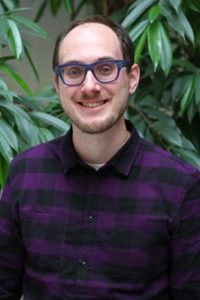
23.11.2021 (10:00 am CET) Self-organizing matter for functional materials, Prof. Willem Noorduin
Abstract:
Shaping, sculpting, and forging customizable compounds into arbitrary forms has the potential to revolutionize technologies for advanced functional materials. Current self-assembly strategies allow impressive levels of control over either shape or chemical composition, but not both, as self-assembly inherently entangles shape and composition. Inspired by natural and biologically controlled mineralization processes, we here achieve independent control over shape and composition by performing chemical conversion reactions on nanocrystals which were first self-assembled in nanocomposites with programmable microscopic shapes. We show that these conversion reactions are surprisingly materials agnostic, allowing a large diversity of chemical pathways, and develop conversion pathways yielding a wide selection of shape-controlled compositions ranging from perovskites to transition metal chalcogenides. Finally, we introduce new strategies to control the self-assembly of the initial composite shapes using light, to direct the assembly process following exact user-defined patterns. Previously unimaginable customization of shape and composition is now achievable for assembling advanced functional components using bioinspired mineralization strategies.
Biography:
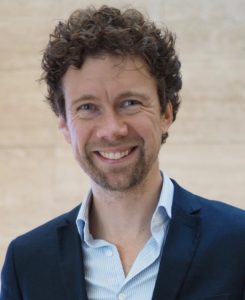
Wim Noorduin is a scientific group leader at the Dutch scientific institute AMOLF and professor at the University of Amsterdam. Noorduin’s research focuses on the dynamic interplay between chemical reactions and crystallisation phenomena to control the emergence of complexity in the solid state.
In 2010, Noorduin received his PhD from Radboud University. From 2010 to 2013, he was at Harvard University as a postdoctoral researcher. From 2014 to 2015, he functioned as both a research associate at Harvard University and an assistant professor at Radboud University. From 2015 onwards, he has been leader of the Self-Organising Matter group at the NWO-Institute AMOLF in Amsterdam.
His papers have been published in a wide variety of prominent scientific journals, and he is the recipient of a various presitigious grants, including Veni, Vidi and KLEIN grants from the Netherlands Organisation for Scientific Research.
2022
05.04.2022 (2 pm CET) Liquid and Gas Chromatographic Methods for Studying Solid and Solute Properties and Interactions, Prof. Daryl Williams, Imperial College of London
Abstract:
Though chromatographic methods tend to be associated with analytical chemistry as well as separation science, chromatographic approaches are powerful physical chemistry methods for understading interactions between solids and solutes, both in the gas and liquid phases. A number of the physical chemistry-based chromatographic approaches were considered:
Inverse gas chromatography determination of adsorbent surface areas including freeze-dried solids, at room temperature and room humidity
Determination of diffusion constants for porous catalysts for liquid-phase reactants using zero column length chromatography
Protein-protein interactions in solution and aggregation propensity using self-interaction chromatography to determine second virial coefficient
This workshop was organized in collaboration with the company “Surface Measurement Systems” and the CRC1411 “Design of Particulate Products”.

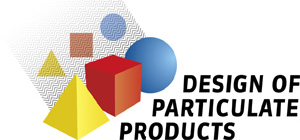
10.05.2022 (9:15 am CET) Predicting Breakage of Particles Using the Discrete Element Method, Prof. Jennifer Sinclair Curtis
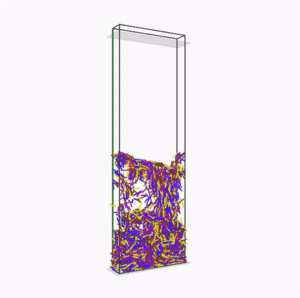
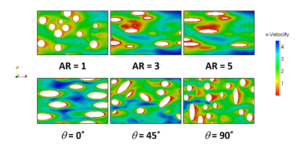
Abstract:
Predicting particle breakage is critical for the control of particle size in some bulk solids handling processes, such as those found in the pharmaceutical, food, consumer product, and mineral processing industries. This presentation will discuss a computational study of the breakage of high aspect ratio particles subject to mechanical agitation using the Discrete Element Method (DEM), in which a particle, represented by a string of bonded spheres, breaks when the tensile or shear stress exceeds the material strength. The numerical model is validated using experimental results of particles undergoing uniaxial compression in a cylindrical container. In addition, this presentation will discuss the breakage of spherical particles upon impact with a flat surface over a wide range of impact velocities and particle surface energies. Force transmission within the particle, as well as regimes of breakage, is described.
Biography:
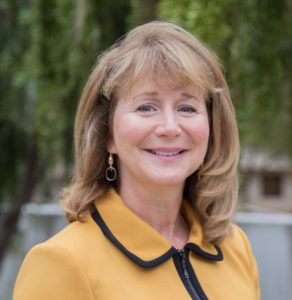
Professor Curtis’ research interests are in fundamental model development for predicting particulate flow phenomena. Fluid flow simulations have been used effectively by industry for many years, but more recently, many energy, pharmaceutical, aerospace, chemical, agricultural and other industries employ multi-phase flow simulations to aid in process design and optimization. Professor Curtis’ particulate flow models have been extensively adopted by both commercial and open source computational fluid dynamics (CFD) software packages. She was the first to partner with ANSYS Fluent to greatly expand the multi-phase simulation capability of that code which is used by 96 of the 100 biggest industrial companies in the world and over 40,000 customers. Her group’s particulate flow models are also included in the CFD Research Corporation software package and the open-source CFD codes OpenFOAM and MFIX. She is currently visiting Professor at the Institute of Particle Technology at Friedrich-Alexander-Universität Erlangen-Nürnberg. More information about her carrier path can be found here
27.09.2022 (2:00 pm CET) Spider silks: the materials that have inspired humankind, Dr. Gabriele Greco
Abstract:
Spiders are often reviled, but their silks and webs are commonly viewed in awe and have fascinated humankind. From raising the interest of ancient philosophers to the practical outcomes in the societies, spider silks have always been part of our culture and, thus, of our scientific development. They are protein-based materials with exceptional mechanical and biological properties that from liquid solutions passes to the solid fibres once extruded from the body of the spiders.
Spiders make good use of these silks to solve many challenges that were imposed by natural selection. How can spider lift animals thousands of times heavier? How can spiders fly? How can spiders build structures that can even stop small birds? In particular, spider silks are used by these arachnids to create such robust structures: the webs. These are built with the support of different types of silk that synergically improve the mechanical efficiency of the web, which has been a source of inspiration to develop metamaterials and fabrics with superior mechanical properties. Moreover, spider silks have deeply been investigated in these decades for their possible applications in biomedical technology as a supporting material for drug delivery or tissue regeneration. Thus, this diversity in materials and structural applications makes spider silks scientific outcomes potentially infinite.
In this talk, the structural properties of silk and webs will be highlighted as well as their interaction with the animals that build them: the spiders. Furthermore, it will be shown how these properties are seen to play an important role in the development of many cultures and societies. Finally, with the advances of the discipline named biomimetics, the role of spider silks and webs in affecting our technological advancements will be explained.
Biography:
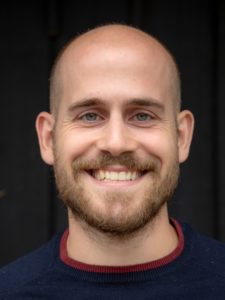
Dr. Gabriele Greco is a researcher in mechanics, biomechanics, and biomimicry at the University of Trento (Italy) and Swedish University of Agricultural Sciences (Sweden). After he obtained the Master in Physics, he enrolled in the PhD program in Mechanics of Materials at the University of Trento under the supervision of Prof. Nicola Pugno and Dr. Barbara Mazzolai. His research focuses have always been spiders and spider silk that he considers as hobbies since he was a child. His passion for spiders led him to co-found Aracnofilia – Italian Arachnological Society, in which he sits as co-chair.
